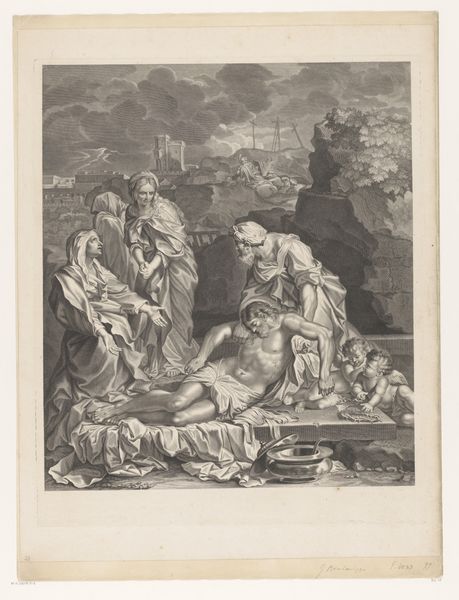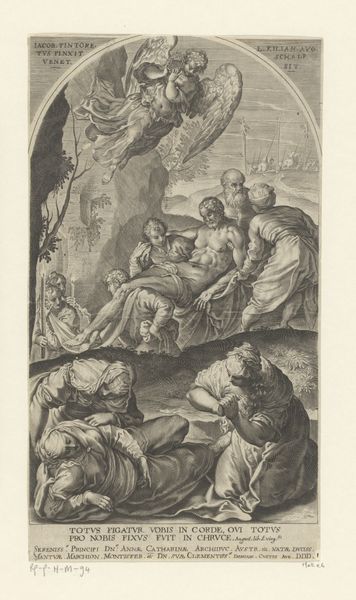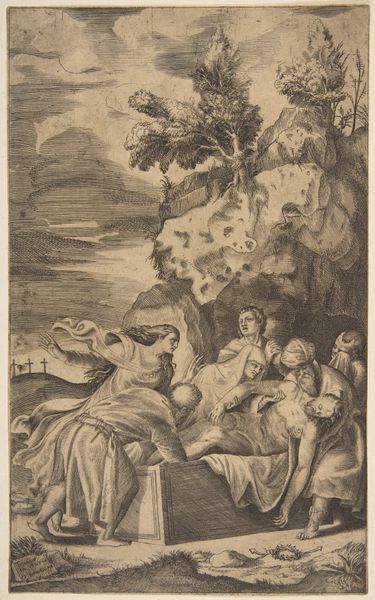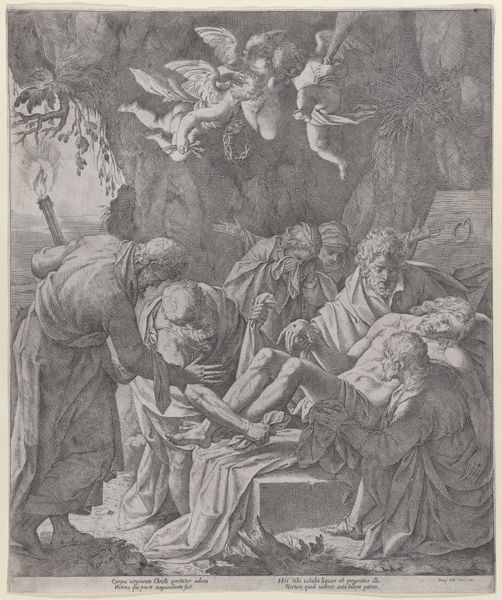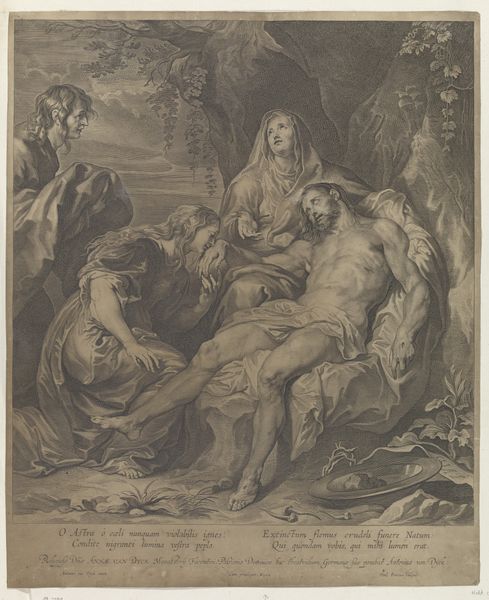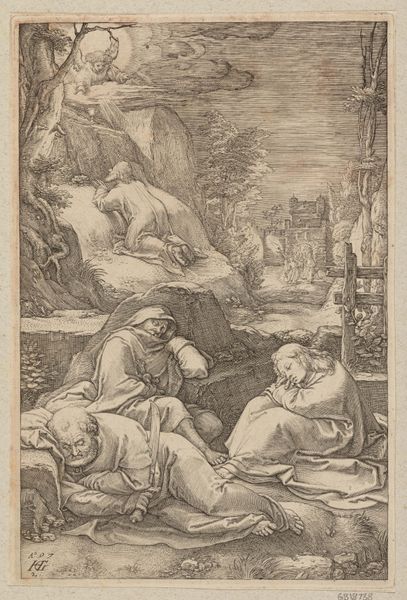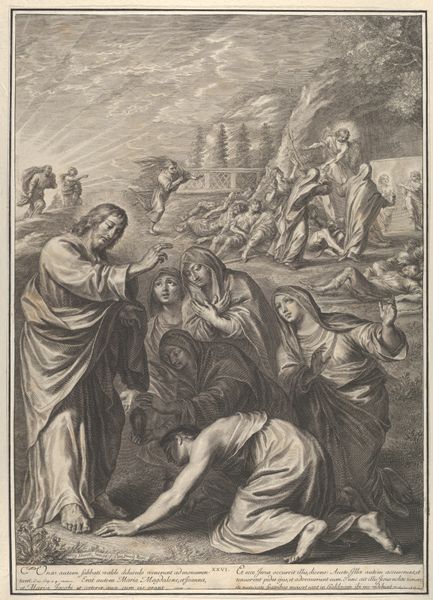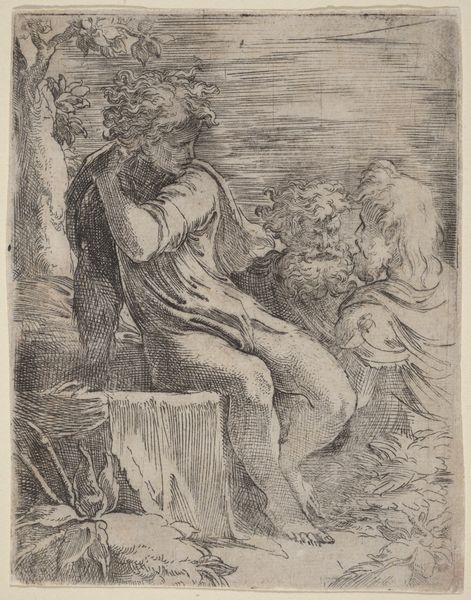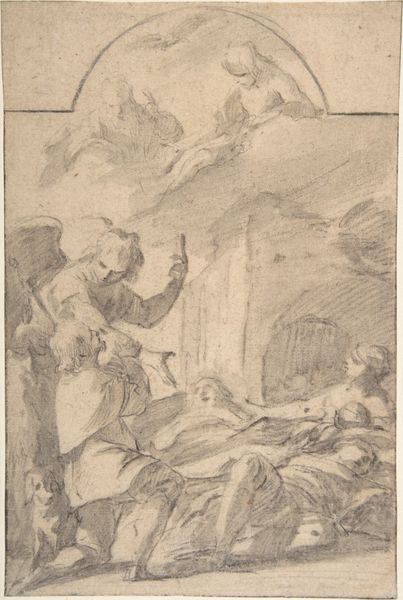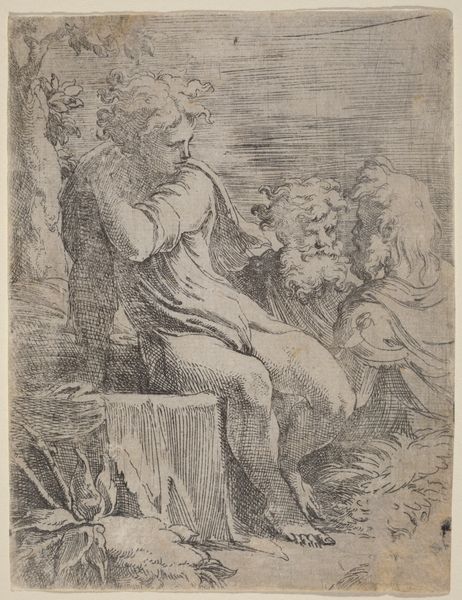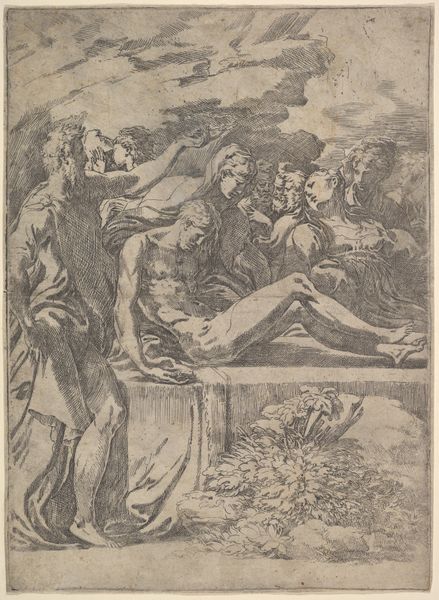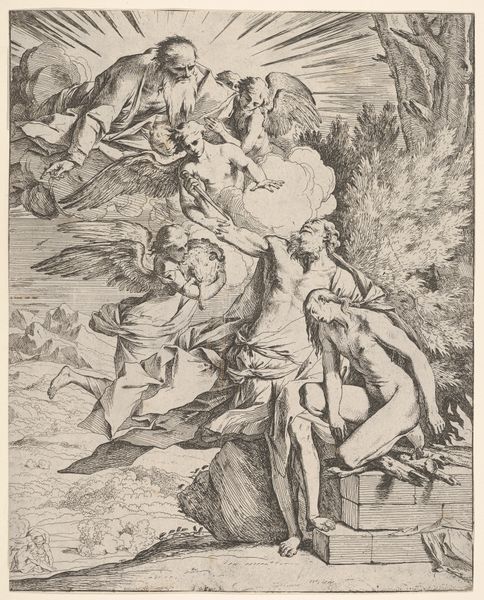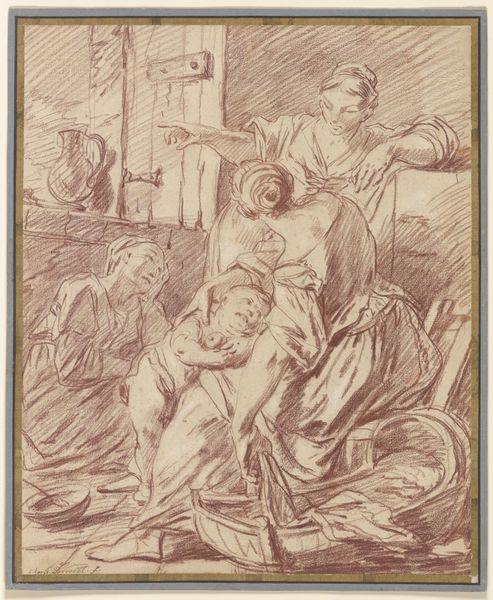
The Agony in the Garden, from "The Passion of Christ" 1618 - 1628
0:00
0:00
drawing, print, etching
#
drawing
#
narrative-art
#
baroque
# print
#
etching
#
figuration
#
history-painting
#
angel
#
christ
Dimensions: sheet: 7 11/16 x 4 15/16 in. (19.5 x 12.6 cm)
Copyright: Public Domain
Curator: This etching by Ludovicus Siceram, titled "The Agony in the Garden, from 'The Passion of Christ,'" dates from between 1618 and 1628. It is currently held in the collection of the Metropolitan Museum of Art. Editor: My immediate impression is one of deep sorrow, almost resignation. The figures are rendered with such vulnerability, and the landscape feels heavy, almost oppressive. Curator: It’s quite representative of the baroque style, using strong diagonals and contrasts to evoke emotion. Consider the visual language used here—the deep shadows represent the gravity of Christ's internal struggle and the impending betrayal. This reflects broader anxieties of religious and political upheaval in the 17th century. Editor: Absolutely. The iconography of the angel appearing above Christ offers a glimpse of divine intervention and solace amidst this earthly despair. This juxtaposition emphasizes the simultaneous existence of earthly suffering and heavenly grace, recurring symbols often utilized in Passion narratives. Curator: Beyond its theological interpretation, the composition underscores themes of isolation and abandonment. Note how the disciples are sprawled at the bottom, seemingly unaware of Christ’s anguish—this highlights the profound loneliness of his sacrifice. This resonates with our current cultural moment where discussions around mental health, grief, and human vulnerability are at the forefront. Editor: And yet, those sleeping figures are not merely incidental; their posture and arrangement invoke centuries of symbolic representation of those figures as witnesses or even archetypes. What meanings were they meant to convey at the time? Are the angles that support the kneeling Jesus symbolic for future audiences or specific for its time? The visual memory held by this image is potent. Curator: Certainly. This visual representation invites conversation. Even today, centuries later, examining pieces like this pushes us to dissect history, art, and power dynamics, recognizing its ongoing relevance. Editor: Indeed. This image really exemplifies how images not only carry meaning but actively create meaning through time and cultural shifts.
Comments
No comments
Be the first to comment and join the conversation on the ultimate creative platform.
